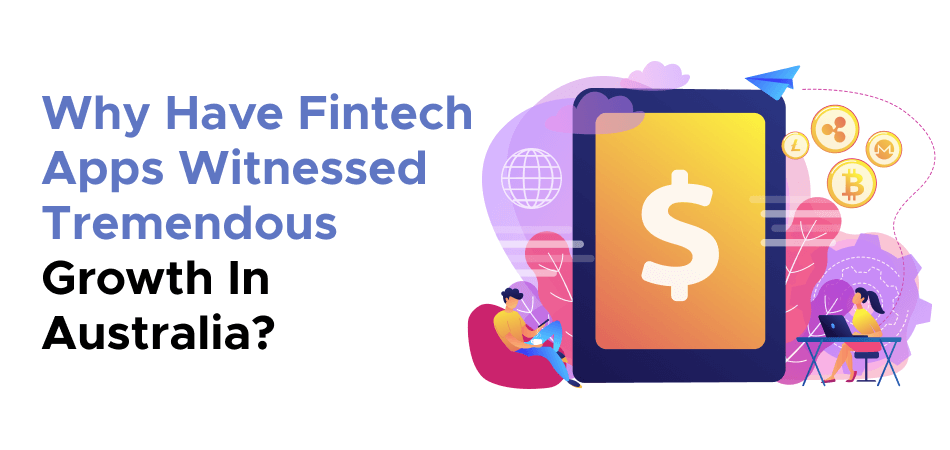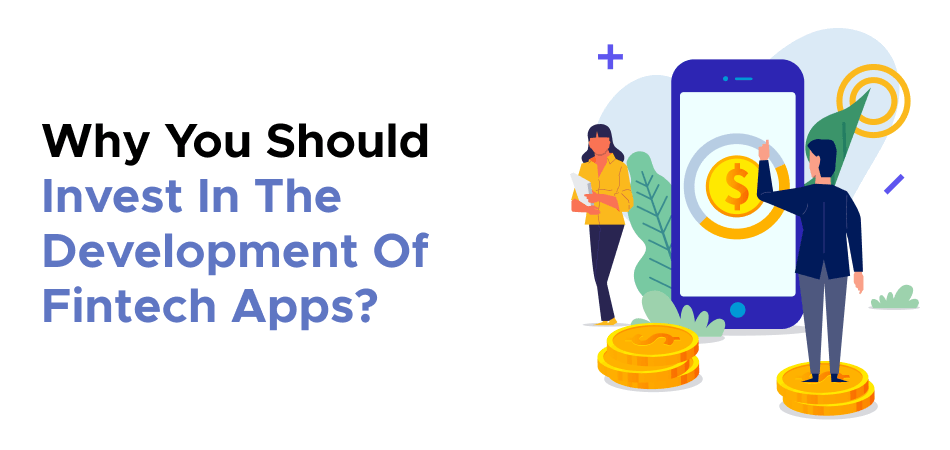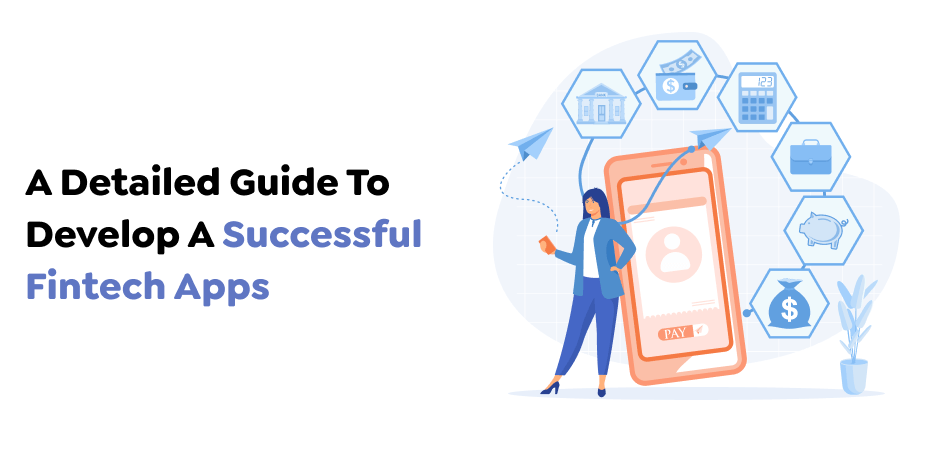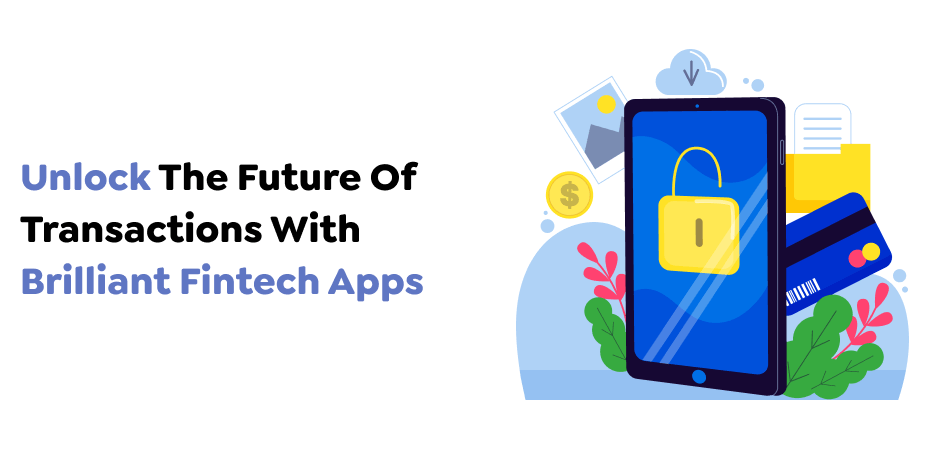18 Nov 2024
The Ultimate Guide to Building a Scalable Fintech App from Scratch
Shaun Bell

The global financial landscape has radically transformed over the past few years. The brick-and-mortar, lengthy traditional banking procedures are evolving into these new sophisticated financial solutions — fintech apps.
Far from improving users’ interactions with these platforms, these innovations are becoming core to how people and organizations approach their money and finances since the emergence of fintech processing payment through mobile wallets, payment processing, investment, and transactions like other cryptocurrency trading applications has become an essential aspect of financial solutions today.
That’s why the construction of fintech apps has become so relevant today.” The answer can be given regarding technological improvements and shifting customer requirements. With a handset in almost every hand, the new generation presents itself with First World communication technologies, social media, mobile wallets, and the like, showing that people are willing to transact on button clicks away from conventional banking.
Such a value proposition meets these demands well by incorporating emerging technologies like Artificial Intelligence, Blockchain, and cloud computing. These technologies allow the fintech application to operate in real-time at a minimal cost compared to what a traditional financial institution would charge.
How Developers Can Navigate Fintech Regulations and Create Engaging Apps
It is no longer enough for app developers to build applications that run or work; they must design secure, elastic, and easy-to-use solutions for users. Designing a fintech app involves comprehending the legal framework since the financial segment is highly regulated internationally.
GDPR in Europe, PSD2 regulations in Europe, and all nation-specific laws mean developers must incorporate these into their apps while still providing users with easy-to-use apps. In addition, new risks in financial segments require using secure protocols, including MFA, end-to-end encryption, and vulnerability testing.
Nevertheless, applying fintech is not only attractive to consumers; on the contrary, it is practically equally useful for companies. Fintech solution providers and offering firms are in a position to improve processes, lessen complex payment methods, and provide a fresh approach to customer engagement.
From simple markets, digital wallets, and peer-to-peer payment systems to incorporating artificial intelligence to provide personalized financial advisory, fintech apps enable businesses to penetrate the rapidly growing digital markets.
With the continuous advancement towards a digitalized world, fintech applications’ role in reshaping the global financial system will further increase. There are great opportunities but significant challenges for those seeking to grow in this industry.
The central concept of success is consumer and tech advancements, learning about users, and creating new and safe apps. Fintech is upon us, and that’s the first thing you must accept before proceeding.
What Is A Fintech App?
A Fintech app is an application that allows one to perform and develop financial services, cover transactions, investing, budgeting, credit, insurance, and many more services. Such apps use the best technology to enhance the convenience of financial activities for everybody, the individual and the enterprise. Whether for payment, budgeting, or stock exchange, a fintech app incorporates numerous efficient financial features into an understandable and easy-to-navigate application.
To build fintech apps, it is necessary to understand the specifics of both domains—technology and finance. An app development company focusing on fintech offers services such as app development, security, and data integration to ensure that the app meets market and regulatory requirements and operates efficiently. These companies have the talent to integrate new trends like artificial intelligence, blockchain, and machine learning into fintech applications to make them efficient and secure.
The app development company is also responsible for making the app easily scalable to accommodate the growing users. They also aim to synchronize banking systems, payment gateways, and other financial channels so users can easily transact and gain information. Security and privacy are critical, especially regarding user information; hence, many applications’ handling usually includes strong encryption, two-factor authentication, and adherence to business regulations regarding money like GDPR or PCI-DSS.
Numerous fintech applications exist, from crowdfunding to P2P lending and money management. The advancement of fintech means that the market for reliable and new applications for numbers one and two is growing, and that is why it is crucial to work with an app development company with a deep understanding of both technologies and the finance market. At last, applications created by fintech are now changing the way individuals and companies use money by making financial services more available, effective, and protected.
Growth Of Fintech Apps In Australia-
The use of fintech apps in Australia has expanded significantly over the last few years thanks to innovation, sound regulatory systems, and evolving demand. As more Australians turn to technology to handle their financial transactions, the use of fintech apps, which include mobile banking, investment apps, and peer-to-peer payments, has grown.
Another factor contributing to this growth is Australia’s robust technological base and high usage of Internet connections. In all aspects of consumers’ daily financial lives, from spending to payment, budgeting, and investing, consumers are looking for a mobile-first convenient solution.
Companies such as Afterpay, Australia’s largest BNPL app, have changed how people in Australia conduct their shopping, and the likes of Up, Revolut, and Xinja have redefined what banking is and how cost-effective it needs to be.
The Australian government has also been supportive through regulation such as Open Banking, which has brought competition and increased the dissemination of accurate information concerning the financial sector. This has led to the development of innovative businesses and large companies offering suitable financial solutions to a digitally oriented client base.
Because of this increasing adoption of fintech, Australia will continue to be an epicenter, with many start-ups and big firms promoting change in the financial services sector.

Stats Showing Fintech Apps Growth In Australia-
The use of Financial Technology apps in Australia has been rapid and facilitated by the enhanced uptake by the people and changing legal frameworks. More than 80% of Australians own a smartphone, and among internet users, 96% use internet facilities for financial services, making Australia an appropriate market to implement Fintech.
As of 2022, the fintech industry was estimated to be worth AUD 13 billion, and its growth rate was expected to be approximately 20% annually. The study showed that 4.5 million Australians have been using buy-now-pay-later services with Afterpay and Zipco, which have over 90% market share of BNPL services. Android Pay and Apple Pay are some of the most common brands when it comes to mobile payment systems, whereas mobile payments in Australia may reach AUD 100 billion by 2025.
Funding for Australian fintech has also risen steadily. In 2021, Australian Fintechs tripled funding to raise AUD 2.3bn in Venture Capital, up from AUD 1.7bn the previous year. This reversed capital flow promotes new technology applications in financial areas such as banking, wealth management, and insurance.
Open Banking and other favorable regulations make Australia the world’s fintech hub, so further development is still in progress.
Key Areas of Innovation in Fintech
There has been fantastic growth and innovations within the financial technology (fintech) space regarding how consumers and companies engage with financial products. Thus, the financial technologies affecting the industry today are innovation and digital, new products and services in banking, payment, insurance, investments, and lending.
The rapidly rising need for quality mobile app developers is at the heart of this revolution, with app development firms and Android app development firms leading this change.
Significant Fields of Development in Fintech
The fintech industry covers virtually all industries and technologies within the financial services space. Some of the critical areas of innovation within the fintech ecosystem include:
1. Mobile Payment
PayPal, Venmo, and Apple Pay might have pioneered mobile payment, but they set the pace for reducing physical contact with payment devices. Other factors, such as QR code payments, NFC technology, and blockchain-positive results, have contributed to the advancement.
Consequently, the demand for mobile applications that provide safe, fast, and easily scalable payment solutions is growing. This demand has also pushed more companies specializing in app development to develop new payment apps that can be created for businesses.
2. Lending as well as Peer to Peer – P2P Networks
Another example of using FI in lending is Peer-to-peer or P2P business–lending clubs such as Lending Club and Prosper, which directly link borrowers with lenders, cutting out the intermediaries in the form of banks. These have opened the doors for borrowers and, at the same time, presented new opportunities for investors.
Mobile apps in this category play an essential role as users can apply for loans, monitor investments, and manage repayments from their mobile devices. So, an Android app development company is responsible for developing applications for these platforms to improve user experience and app performance.
3. Blockchain and Cryptocurrencies
Blockchain and cryptocurrencies are large categories in the fintech field since they provide decentralized, more secure, and transparent financial transactions. The presence of digital currencies such as Bitcoin and Ethereum has transformed trade and asset storage. This technology has also attracted massive interest for several use cases, including supply chain, identity, and payment.
This means that strong security measures and performance scramblers must accompany applications. Robust security features and efficient processing also need to be coupled with apps. In this light, technical development of blockchain app-specific services would also be urgently required, especially for app development companies.

4. Insurtech
Insurtech is the embrace of technology by insurance companies for the simplification, modernization, and individualization of the insurance process. Data analytics, AI, and machine learning open possibilities for tailored insurance products, dynamic pricing models, and quicker claims settlement. App development firms are significant in this line of business as mobile applications continue being implemented and used across policy management and claims submission.
5. Investment Apps
Apps for investing are changing how people learn about the world of stock markets and making investing more accessible for people of all classes. Since fees, high commissions, and brokers are no longer hindrances to investing, these apps make it easy for users to trade and invest.
Beyond this, robo-advisory systems incorporate automation and artificial intelligence that help manage clients’ investment portfolios and make necessary changes without human interference. They take the financial status of the users, the risk tolerance, and goals and develop personalized, efficient investment portfolios for the clients who want to make their financial investments work without actively managing them.
6. Tax management apps
Chasing taxes is one of the most challenging activities in managing finances because dealing with taxes means facing numerous codes, rates, incentives, and legislative changes. They are all the ways that give the different actors involved in the consumption scheme room for slipping up and overlooking potential savings.
To avoid this challenge, Fintech firms have incorporated self-service platforms in intelligent applications, including the physical preparation and submission of tax documents to real-time tracking of tax documents. Thus, by transforming these basic tasks, these applications effectively allow users to work with taxes without prior experience or an accountant.
7. Exchanges and exchange services
These platforms are a part of the World Wide Web, allowing for the exchange of digital currencies on the Internet. With the rise in the adoption of digital currencies by the world’s leading banks and financial institutions, there is a significant demand for platforms initiating these transactions. Through blockchain technology, they developed cryptocurrency exchanges whereby individuals could purchase, sell, or even barter cryptocurrencies known to be a form of money.
These platforms are similar to internet share market trading companies but with the extra benefit of being able to transmute actual dollar bills into coins. Some are interested in holding and facilitating crypto options trading and expanding investment portfolios. While new forms of investing through money-making tools such as cryptocurrencies exist, stock apps are expected to manage conventional investments in the market, keeping the balance between the unprecedented and the traditional.
8. Personal finance apps
They are apps that help people manage their financial status since they have knowledge that enhances decision-making. There are goal setting, budgeting tools, expense tracking, and linking bank accounts to the platforms to enable you to manage your finances efficiently.
Of course, such applications have a clear link with budgets and savings, but tools such as the Praisal application offer different approaches to assist homebuyers in negotiating for lower real estate prices before such property is put up on the market. For more information, please visit the Praisal case study.
Benefits Of Investing In Fintech App Development-
The financial technology (fintech) industry only emerged a couple of years back but has brought revolutionary change to the financial services industry by digitizing the flow of money. The adoption of fintech has been progressive, and therefore, mobile applications are progressively being adopted in this sector. Investment in fintech app development means plenty of opportunities for everyone, from business people to traditional fintech applicators. Here are some key benefits of developing a fintech app:
1. More Customer Convenience
Of all the benefits that fintech apps can bring and have already got to their clients, the most palpable is convenience. These apps enable consumers to make financial transactions conveniently at any given location with their mobile devices. A fintech app does this with a button when sending money, remitting funds, paying bills, or investing in the stock market. From the business perspective, such a level of convenience increases customers’ satisfaction and thus improves users’ engagement.
2. Cost-Effective Solutions
The current financial processes commonly entail high operational expenses because of the branches, papers, and manual procedures. The operational costs above can be reduced or even eliminated using fintech apps. For instance, KYC (Know Your Customer) verification and fraud checks do not require manual operations. It also allows organizations to cut operational expenses, making it possible to provide services to their users at relatively cheaper prices.
3. Improved Security Features
The concern of security cannot be overemphasized more when it comes to financial activity, and any Fintech app has highly effective protection to ensure that user information is well protected. The wallet has security measures such as two-factor authentication, biometrics, end-to-end encryption, and artificial intelligence-enhanced fraud detectors to ensure that all transactions are safe. When developing a sound fintech application, businesses ensure users have a secure place to undertake their financial transactions, leading to trust.

4. Access to a Larger Audience
Fintech apps create new business opportunities by expanding the target market to a global one. Thus, as digital payments and mobile banking use rise, Users from different regions rely on smartphones to manage their finances. Creating a mobile fintech app can enable business organizations to reach out to the unserved/potential markets. It is a crucial issue, especially for firms that seek to carry out operations and establish financial enclaves in regions with suboptimal banking systems.
5. Real-Time Data and Analytics
Using fintech apps, businesses receive data and analytics connected with the users. It makes it possible to conduct customer analyses, rate their spending, and predict your business’s financial situation. The information can thus be used at the strategic level to assist organizations in charting suitable courses of action, effectively segmenting markets, and designing appropriate marketing communications. Real-time also enhances the app’s effectiveness, and user experience means better customer loyalty and interest in the application.
6. Competitive Advantage
Fintech is a highly saturated field, which means using innovation will keep one business competitive. Fintech app development is helpful for companies as it allows them to implement novelties in-app services and features that reflect new trends and customer needs. Whether an instant loan, a cryptocurrency, or a better way to plan budgets, an excellent fintech application can be the foundation of a competitive advantage in a highly saturated industry.
7. Scalability and Flexibility
Fintech apps provide flexibility, meaning businesses can add more service lines as they develop. In this regard, fintech app development is quite flexible; it can quickly grow with a business enterprise’s rising requirements by adding more features to an app, connecting a measuring tool via APIs, or expanding the program’s geographical reach in the global market. When a skilled developer is hired for the app development process, the produced applications adhere to the best practices necessary for future enhancements and app growth.
8. Integration with Other Financial Systems
Fintech applications can easily integrate into payment gateways, bank APIs, and accounting software. A smooth data flow across platforms increases a product’s functionality and usability. However, seamless integration is the heart of a cohesive fintech solution, whether you use an Android or a full-service app development company.
Steps To Building A Dynamic Fintech App?
Creating an app for a dynamic fintech space depends on a strategic plan, solid technology, and user experience to address financial transactions, firewall protection, and compliance. Regardless of whether you are creating a payment app, digital wallet, investment solution, or lending application, there are several stages in building a reliable and efficient application. In this article, we’ll also explain the key factors that must be considered to create a worthy fintech application.
1. Define Your Goals and Target Audience
If you plan to develop apps, you need to know what you want and with whom you want to achieve it. When it comes down to it, this means outlining what the app is: a peer-to-peer payment solution, an investment app, a banking app, or otherwise. Knowing your target audience’s needs and pain points is crucial at this stage to create a product that has real value.
Key Considerations:
What financial services will the application provide (payment, loans, investment)?
Who is the target market (fresh workforce, business entities, global users)?
What need of the fintech sector will the application fulfill?
Getting these answers will determine the characteristics of the app, its functions, and its general work plan.
2. Choose the Right Technology Stack
Choosing the technology setting is one of the most crucial activities in fintech app development. In this case, selecting technologies that will enable scalability, security, and improved integration with financial systems is vital. The list of front-end and back-end technologies might be divided depending on the development platform: Android, iOS, or both.
For example:
- Front-end Technologies: Programming Languages: The company has deemed Node.js, Java, and Ruby on Rails necessary.
- Security Protocols: OAuth, HTTPS, and two-factor authentication (2FA) are crucial in offering user security. This is usually done in consultation with an experienced app development company that recognizes the challenges in fintech.
3.Drawing User Interface based on a User-Centric Approach
Optimizing UX and UI is the key to growing any fintech application since the end user is at the core of the financial market. The company’s interface should be user-friendly, allowing the average user to comprehend complicated financial information. As financing apps work with facets of an individual’s economic life, the interface must be secure and make the users feel safe.
Key Design Considerations:
- Simplified Navigation: Users should easily make payment for a product or service or vice versa.
- Simple Layout: There shouldn’t be many distractions, and they should focus on areas such as payments, transfers, and accounts.
- Parity: This refers to features that must be made available, such as biometric login, passwords, and alerts.
A prominent iOS application development firm can help create a design that fits iPhones appropriately and conforms to Apple’s UI design standards.
4. Emphasis should be put on Strong Security Concerns
When it comes to creating a finance and technology app, security is always guaranteed. Financial applications store personally identifiable information, bank statements, and transaction histories. From the discussions of best practices, it was clear that implementing measures to avoid data loss, possible fraud, and cyber threats is critical.
Key Security Features:
Encryption: Biometric authentication for sign-ins like fingerprints or even the face.
Identification with Data Protection rules, such as GDPR and others, which you and your organization must adhere to.
KYC: KYC or other facilities that can detect fraud during the process.
Selecting the right app development firm with extensive security knowledge will ensure well-embedded features.

5. Develop Core Features and Functionality
All the features and functional requirements at an application’s foundation should be conceptualized here.
Only after completing these activities can we consider building the actual application, focusing on creating the core features and functionalities of the app. Depending on the type of fintech app, the features may vary but typically include the following:
Account Management: Features for viewing transaction history, account management, and information updates.
Customer Services: Transaction history, account management, and personal information changes.
Transaction Capability: Peer-to-peer, bills, and bank transfer capability.
Money Management: This involves creating budgets, savings, analysis, and alerts.
Transaction Alerts: Transactions, balances, and account or card fraud.
Credit Card Support: Integration of customer care support through live chat and FAQs.
A company specializing in iOS applications and considering fintech as its domain of competence will be able to deliver these features with minimal distress while preserving cross-platform compatibility.
6. Test the App Thoroughly
Testing is a critical part of app development. It facilitates the discovery of bugs, performance, and usability issues that might be present in an app before launch. As fintech apps can process and handle financial data, it is critical that the app function excellently all the time.
Types of Testing:
Security: Testing: Performance Testing: To check the app’s speed, scalability, and reliability.
Usability: Check that the app offers a user-friendly interface.
Compliance: Check whether the app complies with financial regulation norms.
Consult your app development firm and ensure that you can perform several testing rounds to ensure an efficient, bug-free launch.
7. Launch and Monitor the App
After the last testing stage, it is time to launch the app. But this is not the end of the process. The following steps include but are not limited to, monitoring user behavior to track usage, identifying and correcting bugs, and releasing application updates if the situation requires it.
Post-Launch Considerations:
- Provide technical support for the apps’ functioning and follow through on users’ feedback. Produce new enhancements, security previews, and bug fixes for the apps.
- Hiring a competent app development company for continuous help can help you maintain the application’s quality and security in the growing fintech landscape.
Essential Features To Offer In Your Fintech App-
Developing an app that will distinguish it from the competition as the fintech industry progresses becomes critical. When creating your app, you must incorporate numerous elements that provide more comfort, security, and user-friendly experiences. Below is a list of the features all fintech apps need.
1. User-Friendly Interface
The first thing that strikes users about a fintech app depends on the UI design. A neat appearance of a web interface improves user experience: even a person with minimum IT literacy is going to find it relatively easy to operate a webpage. Simplicity is vital: redundancy and maximize utility whereby application users ought to be able to easily find features like balance, history, and transfer of funds.
2. Robust Security Features
Security is of high importance in the world of fintech. As more attention is paid to information security and fraud, users should not worry about the safety of their financial data. One has to use MFA, end-to-end encryption, and biometric verification (fingerprint or face recognition). Working with a professional iPhone app developer guarantees that these measures are built into your app to provide maximum protection.
3. Payment and Funds Transfer in Real-Time
For a fintech app to stand out in the current market, you must ensure that it offers real-time payments and transfers. Whether using the application for peer-to-peer transactions, cross-border transactions, or to pay bills, users are still waiting for a delay. Stripe, PayPal, or connecting to a specific local banking network can assist with this method. Incorporation of these services, when worked on by an experienced app development company, will be smooth.
4. Budgeting and Expense Tracking Tool
Budgeting and expense tracking are the most critical features for individuals managing their finances. This tool helps users track their expenses, set financial goals, and provide insights into their overall economic health. Some of its features include automatic categorization of expenditures, summaries of finances, and alerts when budgets are exceeded- the exceeded – else can increase user engagement and retention.
5. AI-Powered Financial Insights
AI may be applied while providing people with tailored service as a financial consultant; based on the expenditure patterns and behaviors, AI can give budgeting tips, investment options, or methods to increase credit scores. This is an added value and an attraction by using technology-savvy users with similar requests for customized financial advice.

6. Seamless Integration With Banks And Financial Institutions
The application must also be integrated with as many banks and financial institutions as possible to support smooth transactions. Multibank API will allow users to connect their accounts directly within the app and track all their transactions, proceeding to make further payments without switching between other platforms and interfaces. The app’s development company needs significant experience building such integrations to ensure the app works as expected.
Conclusion-
With the growth of digital payments and the increasing percentage of cashless transactions, the need for fintech apps has never been higher. Although physical, face-to-face interactions with sellers still occur occasionally, customers’ increasing reliance on their smartphones as mobile wallets, online banking, and users of peer-to-peer payment platforms is changing this trend. Investing in a fintech app is a great chance to enter fast-growing markets already today to deliver better user experiences and improve financial processes for businesses and end-users.
Fintech mobile application development isn’t a joke, but if properly guided, it is one of the most rewarding business initiatives any firm could embark on. As a reliable app development company at 7 Pillars, we offer our clients the design of secure, reliable, and easy-to-use applications and software for the fintech industry.
If you plan your fintech app in the niches of personal finance management, mobile payments, or investment, the 7 Pillars team would be glad to help you navigate the particularities of fintech app design.
We offer various tips and ideas that can be helpful for anyone who wants to begin a career in this industry. If you have more questions or need help realizing your fintech app idea, contact 7 Pillars today. Here, you will find tips for succeeding in the constantly growing field of fintech and other businesses ready for automation.








